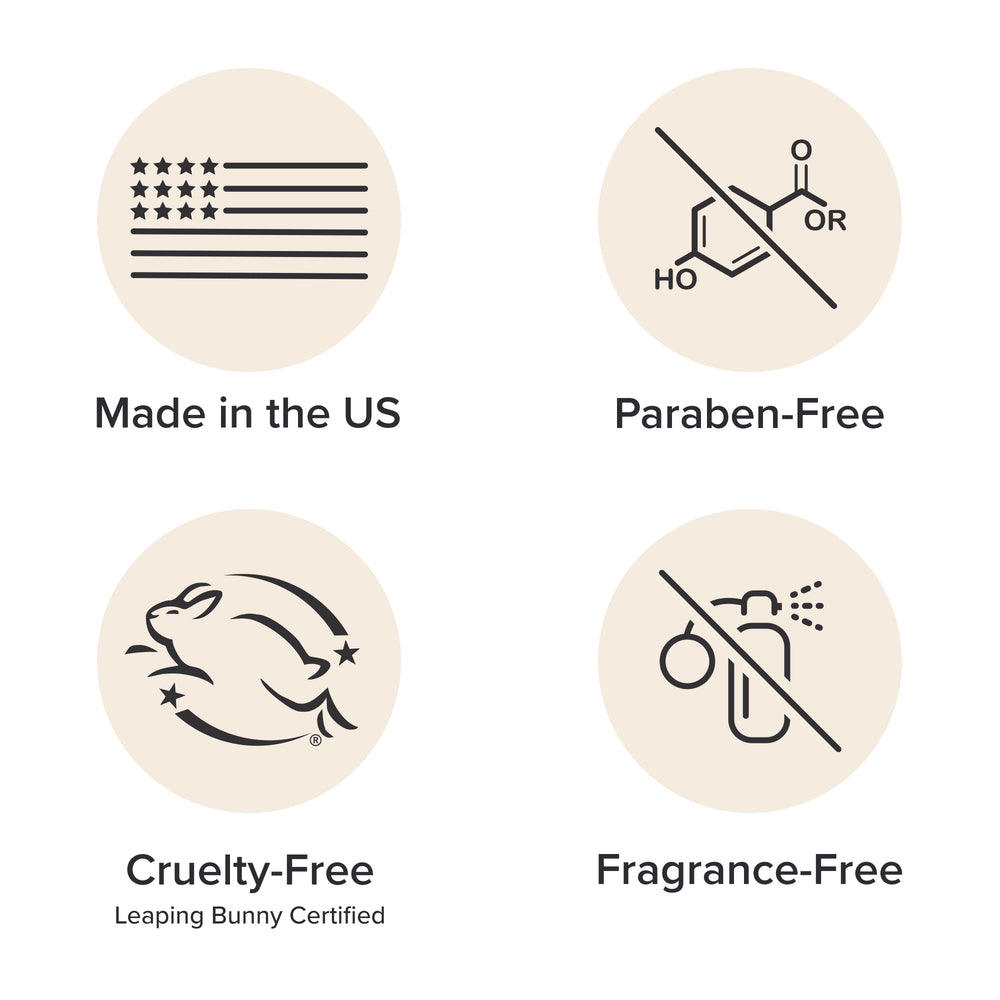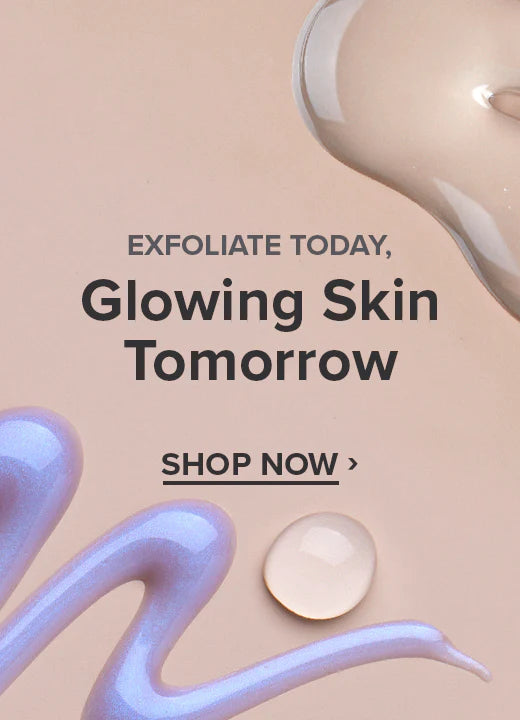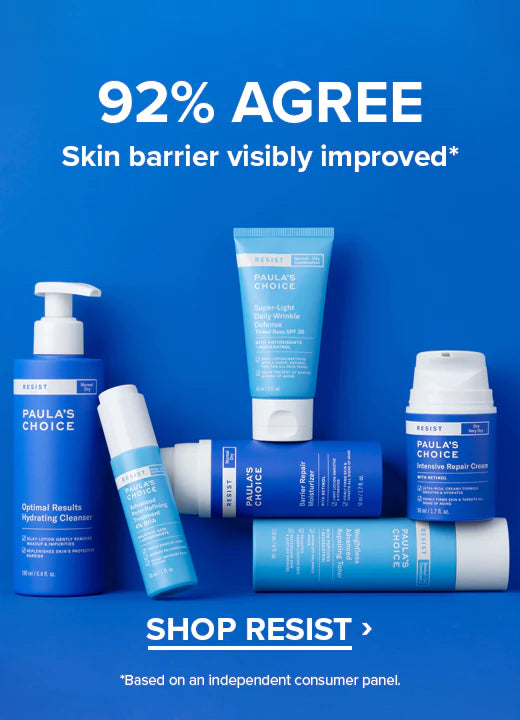Retinol Skin Care Guide for Beginners
Written by: Mercedes Santaella-Lam
Medically Reviewed by: Beth McLellan MD Board-Certified Dermatologist
Whether you’re a long-time skin care aficionado or just beginning your search for a daily routine, there’s one superstar ingredient you’ve likely heard about – retinol. With more than 50 years of use by both dermatologists and skin care companies to take care of numerous skin concerns, it’s one of the top picks when it comes to anti-aging ingredients.
So, what makes it so special? Let’s get into just that while we break down the research behind retinol and explore how it benefits skin.
What is retinol?
First, let’s look at what retinol is – it’s another name for vitamin A. There are many vitamin A derivatives, but retinol is the name for the pure form. Vitamin A has a fascinating impact on skin’s surface because it can help restore a more youthful look and feel.
When skin is affected by environmental assault (as everyone’s is) or you have signs of aging, uneven tone, enlarged pores and rough, bumpy skin, retinol steps in and seems to intuitively know what your skin needs to minimize those concerns. It’s able to coach skin to act in a healthier manner.
Vitamin A isn’t naturally produced by the body, so topical application to skin is the best way to reap its benefits.
In short, lots of things about your skin’s appearance can improve when you use retinol to boost your skin care routine.
How retinol functions
The reason retinol is so effective in so many ways is that it can “talk” to skin, encouraging it to look and feel younger. It communicates with retinoid receptors that all of us have in our bodies to encourage cell turnover and boost skin’s natural production of collagen and elastin – two key components in keeping skin looking and feeling younger (1, 2, 3). It also inhibits factors that lead to discolorations through this process.
Once retinol has been applied to skin, it works to help skin normalize skin’s look and feel, working in tandem with other ingredients proven to visibly diminish various skin concerns. Retinol also helps promote firmer, healthier-looking skin and naturally turns around concerns like dullness and rough texture. With retinol, you’ll see renewed, younger-looking radiance, a remarkably smoother appearance and a noticeable feeling of firmness (4).
Retinol benefits
When you start using a product containing an appropriate amount of retinol for your skin type, you’ll be able to observe the marked skin improvements that come from using this ingredient. The reduced appearance of fine lines and wrinkles, improved elasticity and a more even skin tone are just some of the benefits you'll reap (5).
It is important, though, to support your use of retinol with other products that help increase its effectiveness. Using a broad-spectrum sunscreen is always critical. Even the most effective, research-proven anti-aging ingredients like retinol won’t work as you want them to if you’re not diligent about daily sun protection to protect skin from the pro-aging damage of UV rays.
It’s also important to remember that even though retinol is a superstar anti-aging ingredient for skin, one special ingredient is NEVER enough to take the best possible care of skin. Healthy skin requires a cocktail of supportive ingredients.
This fact is why all our Paula’s Choice formulas contain other vitally important skin care ingredients to help rejuvenate and sustain skin’s smooth appearance such as antioxidants, skin-replenishing ingredients and skin-restoring ingredients, of which retinol is one.
How long does it take to see results from retinol?
How soon you see results from retinol depends on different factors, including the strength and frequency of usage. Some people will notice a visible difference in just a couple of days but results usually present themselves after about 4-6 weeks of usage. We've said it time and again, but patience is always key when it comes to skin care products!
How to choose a retinol product
Choosing the best retinol product is easier than you might think, but there are a few points to keep in mind:
- Packaging matters. Retinol is sensitive to air and light exposure, which means products will become ineffective if they’re packaged in jars or clear containers. Be sure that all retinol facial creams or serums you purchase are packaged in opaque, airless and/or air-restrictive containers.
- Choose retinol skin care products based on your skin type: creams are generally best for dry skin, lotions for normal to combination skin and serums or gels for oily or congested skin.
- It’s also fine to choose a retinol facial product based on its texture or your personal preference. Find one that pairs well with the other items in your routine, that feels good on your skin and that delivers results.
- If an over-the-counter retinol skin care product doesn’t seem to be working well for you after a few weeks, try another; it might take some experimenting to find your perfect match.
- You’ll also see vitamin A derivatives like retinyl palmitate, retinaldehyde, retinyl retinoate and retinyl propionate widely used in skin care products—though retinol is by far the most researched form. That doesn’t mean these other forms don’t work, just that pure over-the-counter retinol has more history behind it.
How much retinol should I use?
There isn’t a single best retinol product for skin—which is why Paula’s Choice Skincare offers various textures and strengths so you can find the one that’s right for your skin type and skin concerns.
Our advice? If you’re a new retinol user, begin with a lower concentration serum (as low as 0.1%) or retinol cream. If you’ve used retinol in the past and had great results, consider a moderate strength retinol serum. And, for more tenacious concerns like deep wrinkles and a pronounced uneven skin tone, look to one of our high strength, 1% retinol treatments.
You can also alternate between lower and higher strengths, based on how your skin responds. Dr. Beth McLellan, board-certified dermatologist, says “I always tell patients ‘There’s a retinol for everyone’ – some of my patients with sensitive skin just need to start slow and build up to stronger versions over time.”
How to use retinol
We recommend using retinol as part of your nighttime skin care routine, when most people don’t mind adding an extra step or two. It’s also fine to use retinol during your daytime routine, as long as you finish with a broad-spectrum sunscreen rated SPF 30 or greater.
As always, cleanse, tone and then apply your AHA (alpha hydroxy acid) or BHA (beta hydroxy acid) exfoliant*. You don’t need to wait for it to absorb; apply your other products immediately after, beginning with the lightest textures first. Finish with the creamiest or thickest product.
For example, if your retinol product has a fluid texture, you’d apply it directly after your leave-on exfoliant and follow up with the other products in your routine. If it’s a cream or lotion, first apply your lightweight booster, essence, treatment or fluid serum products, and finish with a retinol cream. If you’re using a rich creamy moisturizer as well, apply that last.
Don’t forget—when you apply your retinol product, be sure to apply it to your neck and chest so you get retinol’s amazing benefits there, too. Also note that improving the appearance of aging skin is too complex for any one ingredient to handle—even a superstar like retinol. So, for best results, combine it with:
- Other anti-aging, rejuvenating ingredients like antioxidants
- Visibly restorative ingredients like niacinamide and peptides
- Skin-replenishing ingredients like ceramides and hyaluronic acid
*For the best anti-aging benefits, it’s ideal to use both an exfoliant and a retinol cream as part of your regular skin care routine. Retinol doesn’t exfoliate skin— that’s a common retinol myth because it can cause flaking skin (irritant contact dermatitis) for some people. Retinol can help normalize skin’s normal surface cell shedding, which can become sluggish for numerous reasons.
Can you use retinol while pregnant or breastfeeding?
While there is currently no direct link between retinol and issues related to pregnancy and breastfeeding, due to retinol’s link to tretinoin (which has limited research indicating issues with its use), it is considered safest to avoid using it during this time (6).
Thankfully, there are plenty of other effective skin care ingredients that are proven safe to use during pregnancy and breastfeeding. As always, it’s a good idea to consult your health care provider when it comes to which ingredients you’re using during this time.
Retinol side effects
Most people’s skin can tolerate retinol when it’s incorporated into a skin care formula that includes soothing ingredients and skips out on fragrance and irritants. Still, since retinol is a potent, bio-active ingredient, it can result in some side effects (7, 8). These include:
- Redness on the face, or where the retinol’s been applied
- Peeling or scaly skin
- Sensitivity, or a tight feeling
- Increased sensitivity to sun (this can be mitigated by using a moisturizer rated SPF 30 or higher during the day)
If you experience any of these issues, experiment with your retinol use. It could be that your skin can only tolerate retinol once or twice a week, instead of daily. You could also be more sensitive to higher concentrations of retinol, meaning it’s a good idea to seek out a product with a lower percentage of the ingredient. That doesn’t mean you still can’t reap its benefits, though – studies show even in amounts as little as 0.1%, retinol can still have a visible impact on skin (9)!
Retinol alternatives
If you have tried lower concentrations of retinol and a reduced application schedule and are still having issues, it could mean that retinol is not right for you – but there’s good news on that front. There are other ingredients that can have a similar impact on skin aging that might work better for you.
Among the alternatives to retinol are bakuchiol, which targets many of the same concerns as retinol (including lack of firmness, discolorations and wrinkles) and peptides. While they don’t do it in quite the same way retinol does, peptides also communicate with skin to direct it to increase substances within that will make it look and feel younger.
That said, if you haven’t tried retinol before, or are still looking to find the perfect formula for you, we encourage you to branch out and see what this blockbuster ingredient can do!
Learn more about retinol.
References for this information:
- Journal of Cosmetic Dermatology, March 2016, pages 49-57
- Current Topics in Medicinal Chemistry, December 2012, pages 505-527
- The Journal of Pathology, January 2007, pages 241–251
- International Journal of Cosmetic Science, February 2017, pages 56-65
- Archives of Dermatology, December 2007, pages 606-612
- Canadian Family Physician, June 2011, pages 665–667
- Toxicological Research, March 2010, pages 61–66
- Clinical Interventions in Aging, December 2006, pages 327–348
- Journal of Drugs in Dermatology, March 2015, pages 271-280





